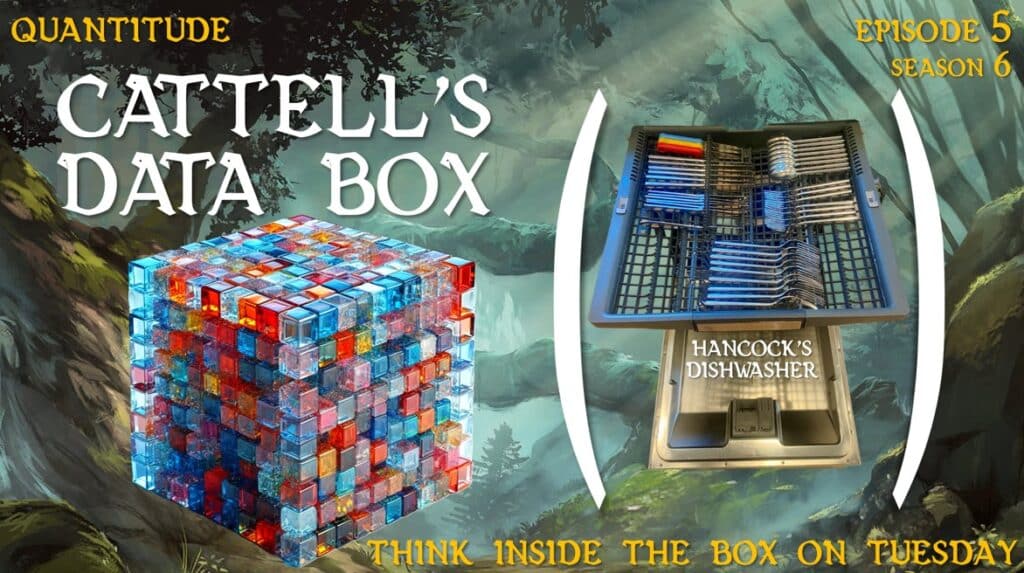In this week’s episode Greg and Patrick discuss Cattell’s data box and try to better understand what it is, what it is not, and how we might make use of this in practice. Along the way they also discuss illegal knives, baseball cards, the Cubs and the Mariners, bicentennial quarters, how to load a dishwasher, horrible people, anal retentive friends, Flat Stanley, Dungeons & Dragons, pricing yourself out of business, needing 20 friends, being super pedantic, The Full Monty, stereograms, and magical statistical accessories.
Related Episodes
- S3E23: The Mättrix Part II: Using Matrices To Our Advantage
- S3E22: The Mättrix Part I: Defining & Manipulating Matrices
- S1E22: Factor Analysis: The Good, The Bad, & The Ugly
Suggested Readings
Boker, S. M., & Martin, M. (2018). A conversation between theory, methods, and data. Multivariate Behavioral Research, 53, 806-819.
Cattell, R. B. (1952). The three basic factor-analytic research designs—their interrelations and derivatives. Psychological bulletin, 49(5), 499.
Cattell, R. B. (1966). The data box: Its ordering of total resources in terms of possible relational systems. In Handbook of multivariate experimental psychology (pp. 69-130). Boston, MA: Springer US.
Cattell, R. B.: (1988). “The data box: Its ordering of total resources in terms of possible relational systems”. In Handbook of multivariate experimental psychology (2nd ed., pp. 69–130), edited by J. R. Nesselroade & R. B. Cattell. Plenum Press.
Cattell, R. B., Cattell, A. K., & Rhymer, R. M. (1947). P-technique demonstrated in determining psychophysiological source traits in a normal individual. Psychometrika, 12, 267-288.
Cattell, R. B., & Cattell, A. K. (1978). Broader Experimental Designs and Uses: The Data Box and the New Techniques. The Scientific Use of Factor Analysis in Behavioral and Life Sciences, 321-376.
Molenaar, P. C. (2004). A manifesto on psychology as idiographic science: Bringing the person back into scientific psychology, this time forever. Measurement, 2(4), 201-218.

